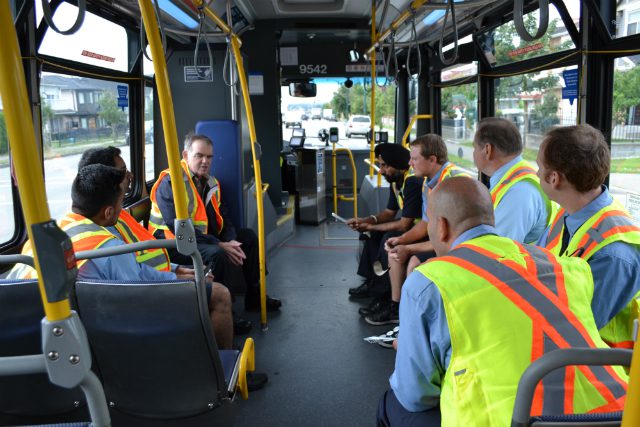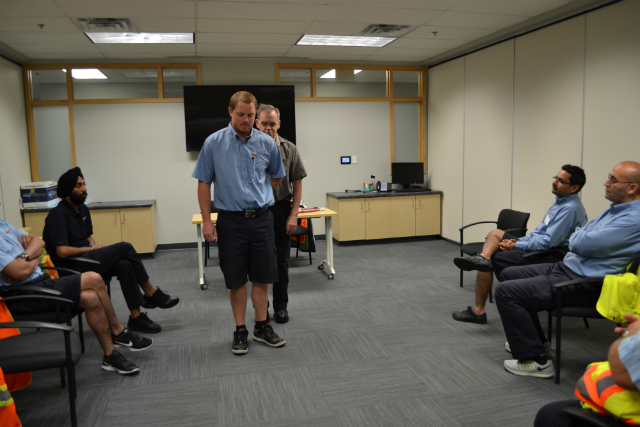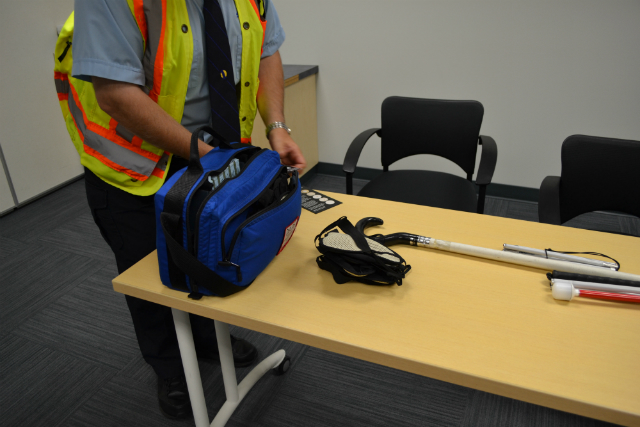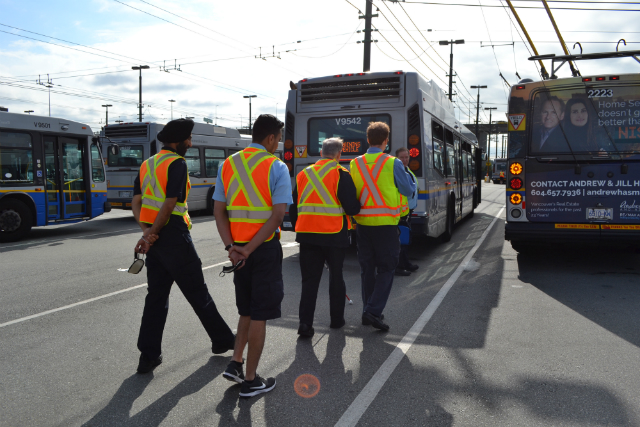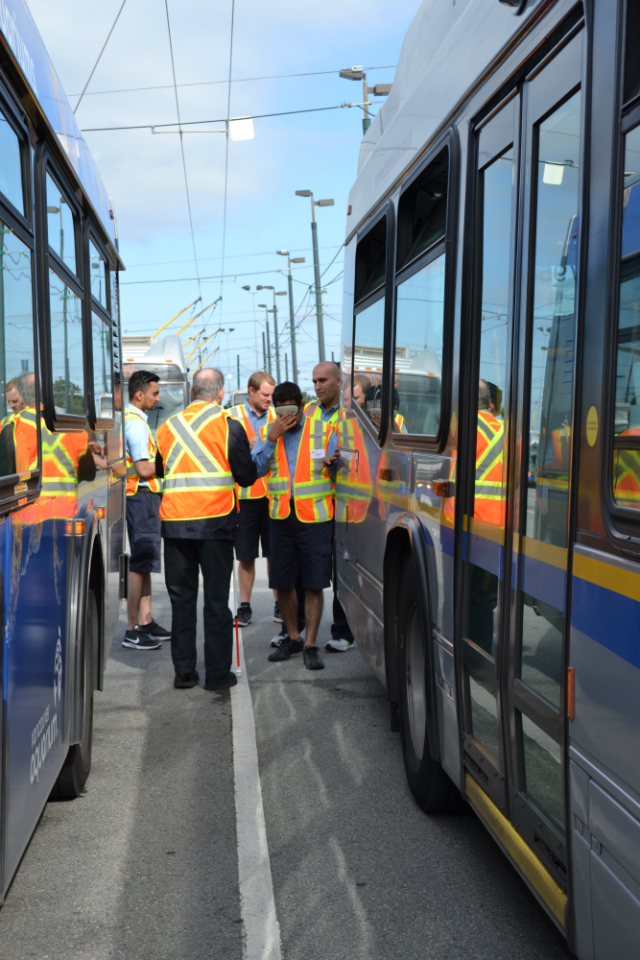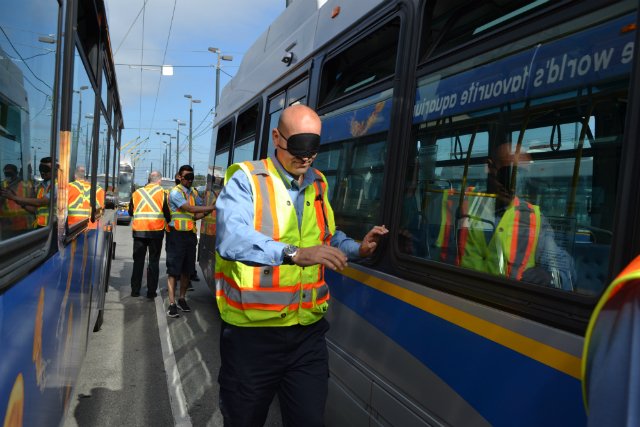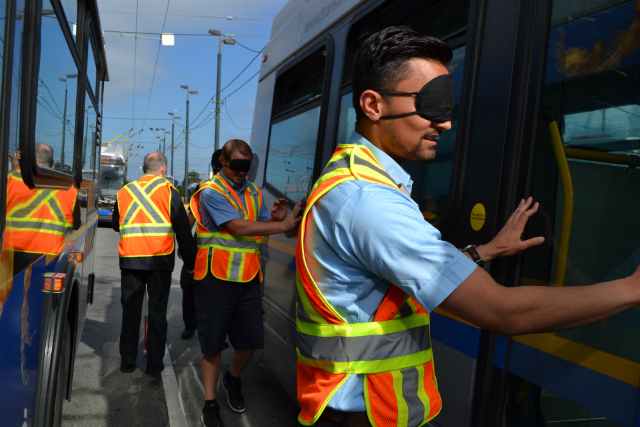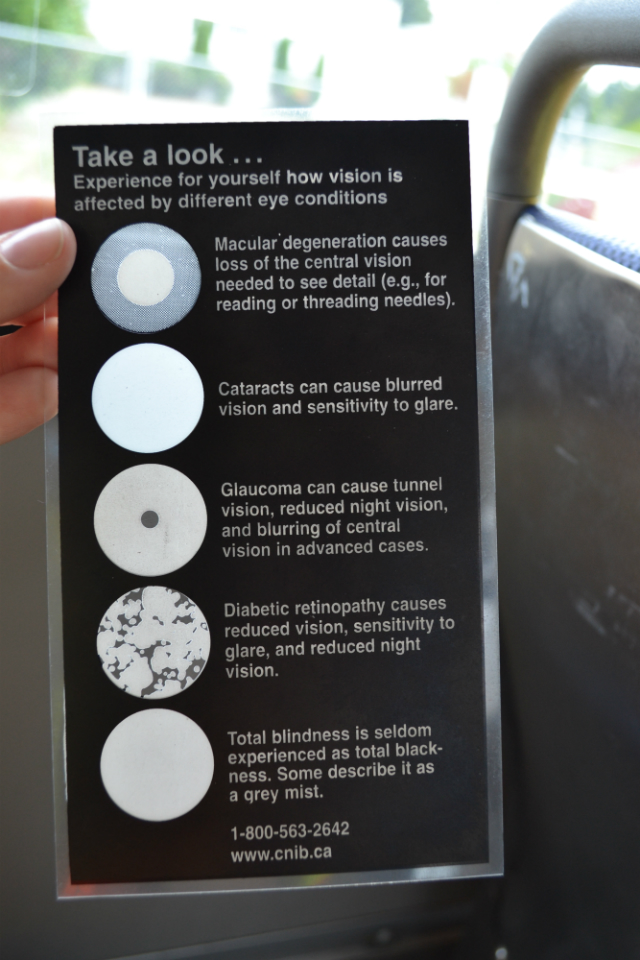CMBC operators-to-be don blindfolds for important training session
CMBC operators-to-be don blindfolds for important training session
“Approximately half a million Canadians are estimated to be living with significant vision loss that impacts their quality of life, and every year more than 50,000 Canadians will lose their sight. This figure includes people who have no sight from birth, people who are legally blind, as well as people with less significant vision loss.”
– Canadian National Institute for the Blind (CNIB)
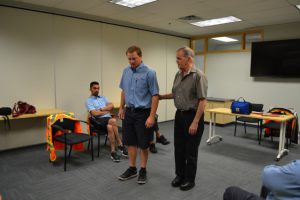
When you want to become a CMBC bus operator, there are many tests and training sessions you undertake to make sure you’re ready for any and all scenarios you may encounter.
One important training session is centred around the blind and partially-sighted community in Metro Vancouver.
The 18-year-old program is meant to show the challenges and barriers the visually impaired community encounter on public transit. It gives operators ideas and tips of what they can do to help riders with visual impairments.
Steve Muller, Chief Trainer for operators at CMBC, believes this is a training that really sticks with drivers.
“This is definitely a session that operators remember participating in through their entire careers. This is not just an instructor providing the information, but visually impaired customers who actually experience the challenges of the system day to day,” said Muller.
Rob Sleath has been presenting disability awareness seminars to CMBC transit operators as long as the training has existed.
Rob serves on the Board of Directors for CNIB and the President and Chair for Access for Sight Impaired Consumers. He has also been instrumental in helping our transit system become more accessible and usable for those with visual disabilities. I was lucky enough to tag along for his very last seminar at CMBC.
A big part of the training is walking a mile – or at least riding one – in the shoes of someone who faces the challenges of a partially sighted or blind person riding the bus.
Operators (and social media hangers on such as myself) are blindfolded and asked to navigate getting onto the bus, payment, seating and more without the use of their sight and without help from anyone else.
“We put these drivers through a fairly intense exercise. It lets them feel, if only for a moment, what a transit ride is like for someone who is blind or partially sighted, ” said Sleath.
Operators are also taught about the different sight aids used, how to identify CNIB Compass Cards, how to interact with service dogs, how to walk with or guide someone who is blind or partially sighted and how best to communicate.
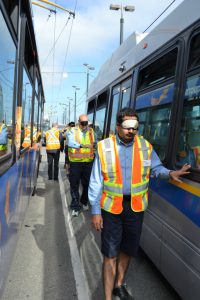
Operators learn that the type of communication is key.
Using clear and directional-based verbal communication gives those without full sight capabilities the opportunity to take transit independently and confidently .
“The difference of an operator saying a seat is 10 steps forward and one step to your left versus using generalities like ‘down a little ways’ or ‘over there’ is huge,” said Sleath.
The audible stop announcements ensure those who have sight impairments are aware of the route and upcoming stops.
Operators are reminded that a noisy bus or open windows may hinder the announcements and to maintain a volume, despite external conditions, that can be heard anywhere on the bus.
Mark McKenzie is a instructor at CMBC and says his own personal experience with this training helped him immensely in the real world situations when he was a bus operator.
“I had a far greater empathy for what they had to deal with [because of the training] and therefore I was more patient and understanding of their needs. Especially when it came to communication and the importance of respectful physical contact such as offering one’s arm to guide a rider as opposed to grabbing someone’s shoulder or hand to forcibly lead them,” said McKenzie.
Have a look at some of the photos from the training:
I think Rob explained the purpose of the training exercise perfectly when he said, “I’m blind but I do everything else that you do in life and on transit, I just do it in a different way. This training helps the operators understand those who do things just a little differently in their transit environment.”
It was my sincere pleasure to participate in this training and to learn, firsthand, what soon-to-be bus operators need to know to be able to serve this community effectively, efficiently and respectfully.
You can find more about TransLink and our Access Transit programs on our website.
Interested in becoming a bus operator? Visit translink.ca/drive for more information.
Author: Adrienne Coling


